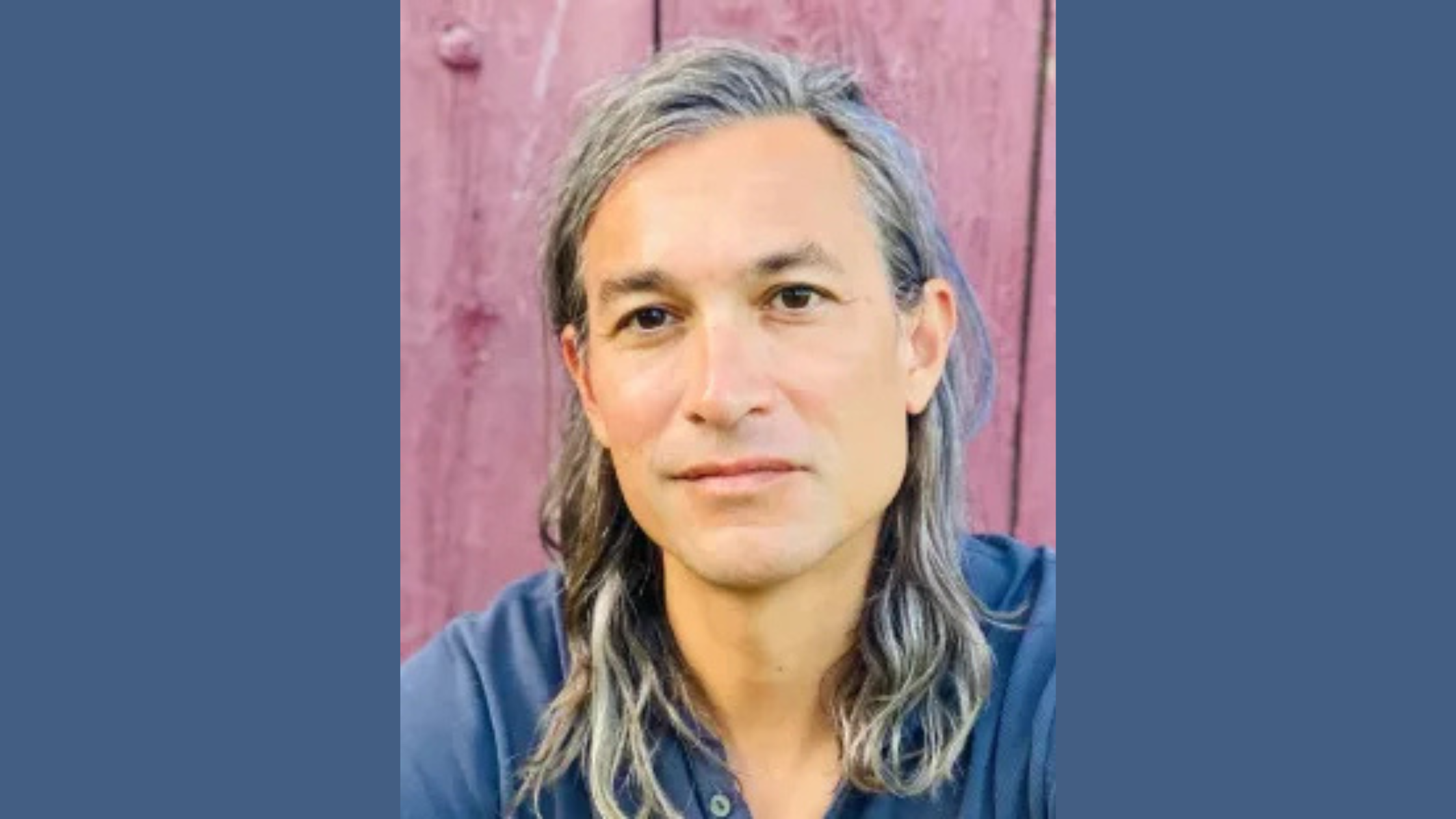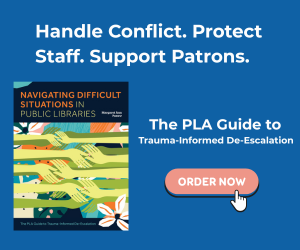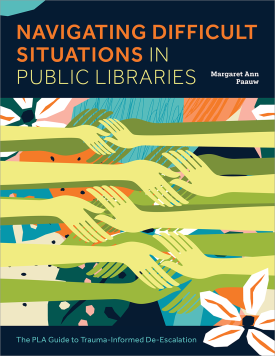Luis Jaramillo On Allowing Characters To Make Not Great Choices

Luis Jaramillo’s The Witches of El Paso showcases the incredible bond between an elderly woman and her beloved grandniece, two women linked not only by their intense devotion to the other but also by their formidable magical prowess. Teenager Nena spends her days in 1943 El Paso, Texas, caring for the children in her family while her older sisters work in the local factories. Yet childcare is the least of her worries. Nena is plagued by dark premonitions and fearful that her close-knit community might label her a witch if they ever glimpsed the extent of her powers. When a foreboding nun, Sister Benedicta, appears one night, Nena thinks she might finally have an answer to her problems. Following Sister Benedicta, Nena finds herself transported to 1790s colonial Mexico, where she cultivates her magic and discovers an unexpected romance. In the present day, readers meet Marta, a lawyer juggling a challenging case along with running her family and caring for her great-aunt, the now ninety-three-year-old Nena. Marta’s problems only increase when Nena asks for help locating a daughter she left long ago, a search that ultimately leads both women to unexpected revelations. The Witches of El Paso is a nuanced cross-generational family drama as well as a riveting mystery that spans centuries. In its starred review, Kirkus hailed The Witches of El Paso as “gripping and cinematic, the novel’s worlds of El Paso past and present will bewitch and enrapture.” Jaramillo spoke with us about how his family inspired parts of the novel, allowing characters to make bad choices, and writing endings that seem like beginnings. Author photo courtesy of Matthew Brookshire.
We follow characters through multiple timelines in the book, so I was curious if there was a particular starting point for the book. Was it a specific character, a time period, or something else altogether?
As with many people who start books, I started not knowing what I was doing, so it took me a while to get to Nena’s voice. Once I heard her, I saw who she was and that helped determine the shape of the rest of the book. Initially I started with thinking about stories of my grandmother and her sisters. Some of those stories made their way into the book, but Nena is a character who’s not based on any particular person. I think it was having her perspective and voice that opened up the new world to me, especially the magical stuff.
We get to see Nena at the bookends of her life, both in her nineties and also as an eighteen-year-old. Can you talk about what it was like exploring this character at such different eras?
Eventually I saw that one thing I was trying to do was write about different stages of life. [With Nena, it’s] the naivete plus the hope of youth, [when] you’re young and you have your childhood behind you. Nena’s been formed by all these traumatic events, but also still looking forward with hope. Marta’s character is basically facing down middle age and is having a freakout. Nena at the end of her life is trying to fix some things that she wasn’t ever able to fix earlier on and this is sort of her last moment. But also she comes at these problems with this wealth of wisdom that she’s gained the hard way.
One of the really compelling things about the book is we get to see Nena acquire that wisdom. Were those scenes challenging to write?
For whatever reason when I was writing Nena, I just saw a lot of the scenes. I thought of her as somebody who was probably going to make a not great choice, but the not great choices were going to lead to some fun story stuff. She’s really led by her emotions and desires. They’re not wrong desires, she just has a desire to live a different kind of life. She’s looking for adventure and she finds more of it than she expects, but she does find what she’s looking for. Once I had her as a character, I saw that she was always going to make the more interesting choice that was probably not going to work out so well for her.
To be fair, the situation she’s in doesn’t exactly have an easy path forward.
I wanted her to be pretty constrained in both lives, the life in El Paso when she’s young and the life in colonial Mexico.
Nena gets transported back to 1792 El Paso. You really immerse the reader in that period. What was the work you did to bring this setting to life?
I did a lot of reading, especially for the convent and other details. The things that were really helpful were scholarly books. There’s a book called Brides of Christ about convents in colonial Mexico. There’s another book called Rebellious Nuns. I found a book in Spanish—I can’t remember the title of it—but it’s a book about food in convents. I just really researched through books mostly for that kind of detail. I went to El Paso and New Mexico and took in as many details as I could about the late eighteenth century. I thought it was an interesting detail that iron implements couldn’t be made in the colonies, they had to be made in Spain. That meant that any sort of iron, even a nail, was really precious. [I was] thinking of that as a metaphor for how far away from everything it must have felt to be in that time, and also to highlight the differences in classes too. The poverty was unfathomable then for some people.
That detail really struck me in the book, just the fact that the rule about iron would affect something as mundane as the furniture in your house.
Little details like that stuck out. I was actually just teaching at a conference about writing historical fiction and fiction that uses research. You never want those details to overwhelm the story. You only want the details to add to it. You don’t just want a big information dump ever. I was looking for those details that really stuck out.
In the press materials it mentions the book was inspired in part by your own family’s history. Can you talk about that aspect of writing the novel?
Like lots of families, my family is one full of storytellers. My family has lived in El Paso and New Mexico for hundreds of years, so some of these stories and folklore haven’t changed since basically colonial times. I think there’s a cultural way of storytelling of the region that makes possible the supernatural. The region itself, I don’t know if you’ve ever been, it’s a really dramatic landscape. The Rockies end in El Paso, it’s the very end of the mountain range. A lot of the region is high desert, so you have this really interesting mix of no water and then floods. It’s a place of extremes: extreme dryness and then when the rains come, the whole desert blooms.
I grew up in California mostly, which has completely different weather and climate, so when I would go to El Paso I felt like I was in a completely different place. One thing that also was very different was that I had a ton of family members in El Paso. Even people I wasn’t related to were referred to as cousin. It felt like there was extended family everywhere. That felt very rich and exciting when I was a kid. When I was writing the book, I wanted to capture that feeling of being in a place where you have really deep roots.
Marta is such a fascinating character in terms of the way she exists almost as a counterpoint to Nena. Can you talk about creating her?
I wanted a character who was skeptical, because I didn’t want a pure fantasy book. I wanted a book that had the balance of more magical realism moments with something that uses realism to portray El Paso. Her journey is to break from that realism as the book breaks from it. Marta came from thinking about somebody who is skeptical. Drawing on my own past, my father is a lawyer, and I grew up surrounded by lawyers. That way of looking at the world, with the concreteness of much of that language, is sort of in my brain, so I liked that for her. I was also thinking about the kind of law that my father did. He’s retired now, but he was a civil rights lawyer for most of his career in the Salinas Valley in California. One year he ran legal aid in El Paso. That year he sued the INS—which later turned into ICE—and won. The INS was raiding bars and restaurants, asking for papers, and then arresting citizens. I wanted to get at the issue of immigration and the way that the border is always a battleground for politics, but I wanted to get at it through this legal lens, which is one of looking for justice. I didn’t want to write a book that was polemical, but I did want to get at these different issues and look at the complications.
The line about Marta that really stood out for me was when you write, “as fierce as Marta could be for her clients, she didn’t have the same kind of competitiveness for herself.” Throughout the book, the reader gets the sense of Marta stepping into her power and advocating for herself more. How did that aspect of Marta find its way into the character?
I think I can credit my editor for heightening that feeling and pointing that out as being Marta’s issue. For Marta, and I think for me in some ways too, we diminish ourselves for various reasons, because of race, ethnicity, class and gender, and maybe because we don’t see a path for ourselves. What would it take to open up that path? One way is just getting older, and reaching a place in your life where you see that you’ve gained some sort of experience and that it’s up to you to determine how the next part of your life goes. It’s dramatized in Marta’s case, but for a lot of us who enter our forties and heading into our fifties, it’s a moment of reckoning with what’s happened in our lives and what we want to do for the rest of our lives.
Marta and Nena’s relationship is so moving. It seems that the relationship between a great aunt and her grandniece isn’t one that’s portrayed a lot in literature. What was intriguing to you about these two family members who are from different generations and what they’re learning from each other?
Well, I’ve always loved old ladies. (laughs) My whole life, I’ve always liked to cozy up to them and see what they have to say. I think that sort of intergenerational relationship is a very special one. I was very close to my grandmother. I think that kind of relationship with somebody who’s older and not your parent is free of a lot of the things that can get in the way of relationships between parents and children. There can be a more direct communication, especially if there’s an affinity between the two people.
In the first half of the book, Marta and Nena don’t have that affinity. Marta has pushed away her relationship to the supernatural. One thing that I was thinking about with the book is that these are the two central characters. Their relationship is the central relationship of the book and it’s almost like a love story between the two of them. There are moments where they are close and there are moments when they are farther apart. At the very end they’re very close with each other and have a very complex relationship that they didn’t share at the beginning of the book.
The ending of the book seems to leave potential to revisit the characters. Are there plans for more books with Nena and Marta?
I ended the book the way I did because I love an ending that seems like a beginning. I love the openness of an ending where there’s a resting point and a feeling that there’s a whole other life awaiting the characters. The reader can imagine what that might be.
With the storyline that takes place in the 1790s, what was it like writing characters like Sister Benedicta? She’s someone who wields a lot of influence in the convent, but the outside world views her very differently.
Women in colonial Mexico had very few choices. I was looking at the ways in which women’s lives were constrained in all these different times and putting them up against each other. At the same time, I wanted to write about women who were empowered and were finding ways to enact their power in whatever ways they could and in the places that they could.
In my research, the book about rebellious nuns is really about this convent where the abbess is in a fight with the bishop. She’s doing all sorts of things to keep the convent separate, to maintain some of the control of the convent and keep the bishop and the priests out of it. It’s interesting to see people like her or someone like Sor Juana Ines de la Cruz. She found a way to be a nun and also write poetry and lots of other things in a society where none of that stuff was typically permitted. I really enjoyed trying to find examples of that [rebelliousness] in my research and then extrapolating from those examples.
One thing I enjoyed about reading the book was that I was never sure how much I could trust Sister Benedicta.
I’m writing something new and I’m explicitly thinking about all of the characters as being pretty flawed. You can’t really trust any of them. I wasn’t thinking about that exactly in the writing of this book, but I think that characters have to have motivations and desires and those motivations and desires are in conflict with other characters, otherwise there’s no story.
And finally, what role has the library played in your life?
A ton. I spent so much time in the Salinas Public Library. Of course, I also had a library card in El Paso. Every summer I would go up to Lake Stevens, Washington, where I had a library card in the Lake Stevens Library. I would just check out stacks of books anywhere I ever went and plow through them. I was the opposite of a reluctant reader, whatever that is. Libraries are so important for me. I’m actually married to somebody who works in development at the Queens Public Library. It’s not just the libraries have books, but they have all sorts of other things for community members, and all of it is free. There are so many things that the library does. It’s the only place in our contemporary society where so many different kinds of people go and coexist and get such enjoyment out of it.
Tags: Luis Jaramillo, magical realism












